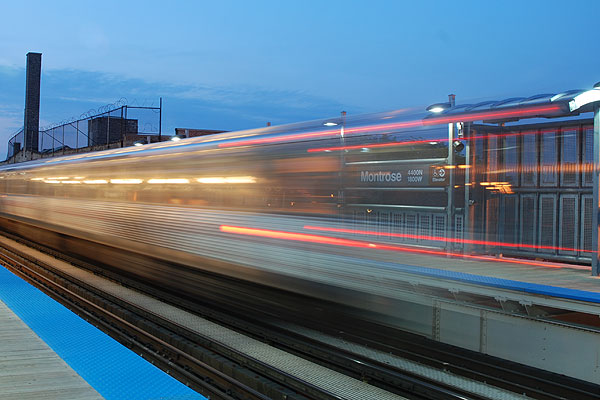
Update: the CTA open fare system has been approved (h/t @rsamer).
Chicago has several mottoes and names, like Horto in Urbs Urbs in Horto, the City that Works, and the Windy City. But more recently the unofficial motto has been "Chicago: We're not Detroit." It's fun to get urbanists and historians talking about why that's the case: why Chicago, though it has lost population over the last decade, has avoided the collapse its midwest/rust belt peers have faced. There are a lot of answers, like the fact that the city's base as a real hub for the products of the Upper Midwest allowed it to transition into a virtual one, laying the groundwork for its financial industry.
One I hadn't thought about all that much was its old, extensive public transportation system. In a fascinating interview with Grid Chicago, former Milwaukee mayor and Congress for the New Urbanism president John Norquist emphasizes how superior our public transit is, and how it left the city positioned for the urban renaissance that's come about with the countrywide embrace of urban centers and walkable cities:
The best thing Chicago did was not tearing out its system. They did tear out parts of it. If you look at an old map of the CTA there were a few extensions of current routes. For example there was one route that went to Back of the Yards that was removed. But by and large it’s still intact and the Metra system, which was vast at the end of World War II, is still vast, although a few lines are missing.
[snip]
So that really saved Chicago. This city went through a similar decline as other big American cities in the postwar period, just because everybody was going for that suburban dream. But when people finally started to revisit that and think maybe the city isn’t so bad, Chicago was ready because it had its transit and it rebounded. The first skyscraper built in Chicago after the war was the Inland Steel Building [30 W Monroe, completed in 1957], and now it’s one of the oldest high-rises downtown.
Norquist also talks about the ideological reasons for the failure of light rail in Milwaukee, which are similiar to those that have kept a light-rail plan on ice in Cincinnati, though that may change with a considerable shift in the latter's city council earlier this month. He also has some interesting things to say about network theory and good congestion; it's really worth a read.
Obviously Detroit suffered from the collapse of its dominant industry—but then again, that industry is one of the reasons Detroit's public transit is so bad. The result has been underfunding, poor performance, and preposterous half-measures like the People Mover, which moves people in only one direction around downtown:
[D]eep cuts at the Detroit Transit Authority have resulted in only half of the city's buses running, and riders waiting at the curb for buses running an average of 11/2 hours late. The city bus line's $80 million budget was cut $27 million.
[snip]
The People Mover is one of the few systems in the nation in without a dedicated funding source such as a regional sales tax.
Now Detroit's in a fix (well, it's in a lot of fixes): there aren't enough people or jobs to support a robust public transit system… and a lack of good public transit makes the city an unattractive place to live and work. It had a streetcar system through the 1940s, but the city removed it, leaving the metropolis without light rail—if you count the People Mover—for about four decades. The Woodward Light Rail line is still in the works, funded by investors, community groups, and the federal government, but it's difficult to imagine it functioning when it's dependent on a completely dysfunctional bus system (PDF). And it will be built, if at all, into the headwind of a poor economy.
So did the CTA and Metra "save" Chicago? I don't know if I'd go that far, but it also seems to be the case that it allowed the city to maintain the other advantages it had, so it's hard to separate from the things that did save it.
Photograph: -Tripp- (CC by 2.0)


